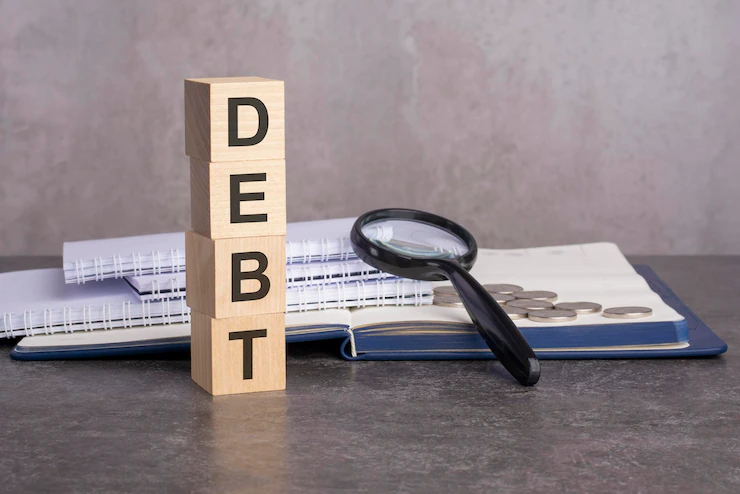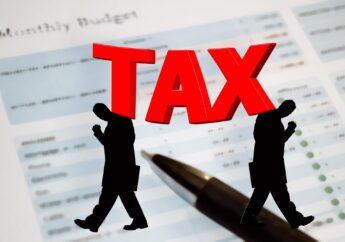Navigating Insolvency: A Comprehensive Guide To Financial Recovery
by Barsha Bhattacharya Finance 06 November 2023

In the intricate world of personal and business finance, the shadow of insolvency can loom large, casting a daunting pall over your financial future. When the burden of debt becomes overwhelming, it’s crucial to seek a guiding light towards recovery. In the United Kingdom, insolvency practitioners play a vital role in helping individuals and businesses navigate the challenging path of insolvency and emerge on the other side with renewed financial health.
The UK insolvency practitioners Hudson Weir stands ready to provide the necessary expertise and guidance on this journey to financial recovery.
Insolvency is a financial state where an individual or a business is unable to meet their financial obligations, particularly the repayment of debts as they fall due. It’s a precarious situation where liabilities outweigh assets, putting one at risk of financial collapse. Insolvency can be caused by various factors, including excessive debt, economic downturns, or poor financial management.
Recovering from insolvency is not only possible but essential for securing a stable financial future. In this comprehensive guide, we will explore the ins and outs of insolvency, the road to recovery, and the mechanisms available, including Debt Relief Orders.
What Is Insolvency?

Insolvency is a term that often carries a heavyweight in the world of personal and business finance. At the same time, it signifies a financial state in which an individual or a business entity finds itself unable to meet its financial obligations, particularly the timely repayment of debts. In this state, liabilities surpass assets, creating a precarious situation where the financial foundation is at risk of collapsing. The discussion of financial recovery finds pertinence here.
The causes of insolvency can be diverse, ranging from excessive debt burdens and poor financial management to external economic factors, such as recessions or market downturns. However, its crucial to recognize the signs of impending insolvency to address the situation promptly and seek the assistance of professionals who are well-versed in navigating these complex financial waters.
Individual Insolvency
For individuals, insolvency can manifest in various ways. It may result from accumulating overwhelming personal debts, such as credit card balances, loans, or mortgage arrears, which become increasingly difficult to repay. Again, Job loss, medical expenses, or a sudden change in financial circumstances can exacerbate the problem.
Corporate Insolvency

In the context of businesses, insolvency can take on different forms. It may occur due to mismanagement, declining revenues, or inability to meet financial commitments to creditors and suppliers. Corporate insolvency can manifest as cash flow problems, an inability to pay employees, or defaults on loans or lease agreements.
Therefore, understanding the different types of insolvency is crucial in assessing the severity of the situation and determining the most appropriate course of action. Common categories of insolvency include:
Cash Flow Insolvency
This occurs when a person or business entity doesn’t have enough liquid assets, such as cash or easily convertible assets, to meet current financial obligations. That time, they need to take strong actions to attain financial recovery.
Balance Sheet Insolvency
In this scenario, an individual or business has more liabilities than assets, suggesting an unsustainable financial position.
Technical Insolvency
Technical insolvency arises when a person or business cannot meet financial obligations but is not yet facing legal action or creditor demands.
Bankruptcy

Bankruptcy is a formal declaration of insolvency, often leading to the sale of assets to repay creditors.
Recognizing the signs of insolvency and understanding its various forms is the first step towards addressing the issue effectively. Seeking the guidance of insolvency practitioners, such as Hudson Weir, can provide the expertise needed to navigate the intricate process of financial recovery and ensure a more stable financial future.
How Can You Recover From Insolvency?
Facing insolvency can be an overwhelming and stressful experience, but it’s important to remember that recovery is not only possible but often a necessary step toward securing a more stable financial future. Whether you’re an individual overwhelmed by personal debts or a business struggling with financial obligations, the road to recovery involves a combination of financial recovery strategies, professional guidance, and, at times, formal procedures. Insolvency practitioners play a crucial role in helping individuals and businesses navigate these challenging waters.
Here are key steps and strategies to consider when recovering from insolvency:
1. Financial Assessment
The first and most critical step is to conduct a comprehensive financial assessment. This involves taking a close look at your financial situation, including your assets, liabilities, income, and expenses. Understanding the extent of your financial challenges is crucial in developing an effective financial recovery plan.
2. Debt Management Plans (DMPs)
One potential strategy for recovery is the use of Debt Management Plans (DMPs). These plans involve working with a DMP provider to negotiate with creditors for more favorable terms. This may include reduced interest rates and a structured repayment plan that fits your financial capacity. DMPs are designed to make debt repayment more manageable and help you regain financial control.
3. Individual Voluntary Arrangements (IVAs)
An Individual Voluntary Arrangement (IVA) is a formal agreement drawn between your creditors so that it enables repayment of loans over a specified period, usually five to six years. IVAs often involve writing off a significant portion of your debts, making it a viable option for recovery. IVAs are legally binding and can prevent creditors from taking legal action against you.
4. Bankruptcy As A Last Resort
Bankruptcy should be viewed as a last resort for individuals or businesses. It involves declaring that you cannot pay your debts which can lead to the sale of your assets to repay creditors. While bankruptcy can offer a fresh financial start, it has significant consequences, including an adverse impact on your credit and restrictions on financial activities.
5. Emergency Fund: Antidote To Financial Recovery

To prevent future financial crises and reduce reliance on credit, it’s essential to build an emergency fund. This fund acts as a financial safety net, providing a cushion against unexpected expenses like medical bills, car repairs, or job loss. The goal is to have three to six months’ worth of living expenses saved in an easily accessible account.
6. Financial Education
Building your financial knowledge and skills is a critical aspect of recovery. Seek financial education to understand how to manage your finances effectively, make informed financial decisions, and avoid falling into the same financial traps in the future. Insolvency practitioners can provide valuable guidance regarding financial recovery.
7. Seeking Professional Advice
When dealing with complex financial situations, it’s often advisable to seek the guidance of insolvency practitioners or financial advisors. These professionals have the expertise to assess your financial challenges, recommend suitable recovery strategies, and help you navigate the complex world of insolvency.
8. Regularly Review Your Financial Situation
As you progress along the road to recovery, it’s essential to regularly review your financial situation. Circumstances can change, and your financial approach may need adjustment. Staying proactive in managing your finances is key to maintaining financial stability.
9. Good Financial Habits
Adopting and maintaining good financial habits is an important step to financial recovery. This includes paying your bills on time, avoiding high credit card balances, and setting aside money for savings and investments. Establishing a routine for financial management can help prevent a return to insolvency.
What Do You Need To Know About Debt Relief Orders In The UK?

When facing insurmountable debt, one of the potential avenues to explore in the United Kingdom is a Debt Relief Order (DRO). A DRO is a formal insolvency procedure designed to offer debt relief to individuals who meet specific eligibility criteria. They pave the pathway towards financial recovery.
Here’s what you need to know about Debt Relief Orders:
1. Eligibility:
To be eligible for a DRO, an individual must meet certain criteria, including:
- Owning assets valued at less than £2,000.
- Having debts of less than £30,000.
- Having a disposable income of less than £75 per month after accounting for essential living expenses.
Meeting these criteria is crucial for obtaining a DRO. It’s essential to work with a qualified debt advisor or insolvency practitioner to ensure your eligibility.
2. Duration
A Debt Relief Order typically lasts for one year. During this period, your debts, included in the DRO, are frozen. This means that creditors cannot take any legal action to recover the debts, and you are not required to make payments toward these debts.
3. Application Process:
Applying for a DRO involves several steps:
Seek Advice
Before applying for a DRO, you must seek advice from an approved intermediary. These intermediaries are usually debt advisors or insolvency practitioners who will assess your financial situation and confirm your eligibility.
Complete The Application
Once your eligibility is confirmed, the intermediary will help you complete the necessary application forms. You must provide detailed information about your financial situation.
Pay The Fee
There is a fee associated with applying for a DRO, which is currently £90. In cases of extreme financial hardship, you may be eligible for a waiver of this fee.
Submission And Approval
After completing the application forms and paying the fee, your intermediary will submit the application to the official receiver, who will review and either approve or reject the DRO. If approved, your debts will be frozen for one year.
4. Impact On Credit
While a Debt Relief Order can provide much-needed relief from overwhelming debt, it will have a significant impact on your credit rating. The DRO will be recorded on the Individual Insolvency Register and will appear on your credit file for six years. During this period, obtaining credit may be challenging, and you will need to rebuild your credit rating over time.
5. Debt Write-Off
At the end of the one-year period, assuming you meet all the conditions, the debts included in the DRO are typically written off, meaning you are no longer obligated to repay them. This provides a fresh start for individuals who have been struggling with unmanageable debts.
How To Apply For Debt Relief In The UK

Applying for debt relief in the United Kingdom involves several steps, and the specific process you follow can depend on your financial situation and the type of debt relief you’re seeking. Here’s a general overview of how to apply for debt relief in the UK:
1. Seek Professional Advice
The first and most crucial step is to seek professional advice from a qualified debt advisor or insolvency practitioner. These experts can assess your financial situation, understand your debt problems, and help you explore the most suitable options for debt relief.
2. Explore Available Options
Debt relief in the UK can take various forms, such as Debt Relief Orders (DROs), Individual Voluntary Arrangements (IVAs), bankruptcy, and informal negotiation with creditors. Your advisor will help you understand the pros and cons of each option and determine which one aligns best with your circumstances.
3. Prepare Financial Information
You’ll need to gather detailed information about your financial situation, including a list of all your debts, assets, income, and expenses. This information is essential for your advisor to assess your eligibility for specific debt relief solutions.
4. Determine Eligibility
Your advisor will assess your eligibility for different debt relief options. For example, to qualify for a DRO, you must meet specific criteria, including debt and asset limits. Eligibility for other solutions, like IVAs or bankruptcy, also comes with its own set of criteria.
5. Complete Necessary Forms
Depending on the chosen debt relief solution, you may need to complete application forms and provide supporting documentation. Your advisor will guide you through this process and ensure that all required information is accurate and complete.
6. Pay Any Associated Fees
Some debt relief solutions may involve fees. For example, applying for a DRO requires a fee of £90. In cases of financial hardship, you may be eligible for a fee waiver. Your advisor will assist you with this process.
7. Submit The Application
Once all the necessary forms are completed and fees are paid (if applicable), your advisor will submit the application on your behalf. This step initiates the formal review process.
8. Review And Approval
The relevant authority, such as the Insolvency Service or an insolvency practitioner, will review your application. The review process can vary in duration, depending on the type of debt relief you’re seeking. If your application is approved, the chosen debt relief solution will be put into effect.
9. Follow The Agreed Plan
For some debt relief options, like IVAs or bankruptcy, you’ll need to adhere to a formal plan, which typically involves making regular payments to your creditors over a specific period. It’s important to follow the agreed plan faithfully.
10. Rebuild Your Financial Health
As you progress through your chosen debt relief solution, it’s crucial to focus on rebuilding your financial health. This may include improving your credit score, adopting better financial habits, and setting yourself on a path toward financial stability.
Conclusion
Navigating insolvency and seeking debt relief is a complex and often emotionally challenging journey. However, it’s a journey that holds the promise of a brighter financial future. The UK insolvency practitioners play a pivotal role in guiding individuals and businesses toward financial recovery.
Understanding what insolvency is, exploring recovery strategies, and making informed decisions about the most suitable debt relief option can pave the way for a fresh start. Remember, you don’t have to face this journey alone; there are professionals ready to provide expert advice and support. As you move forward, focus on rebuilding your financial health and taking steps toward a more stable and secure financial future.
Read also:







































































































